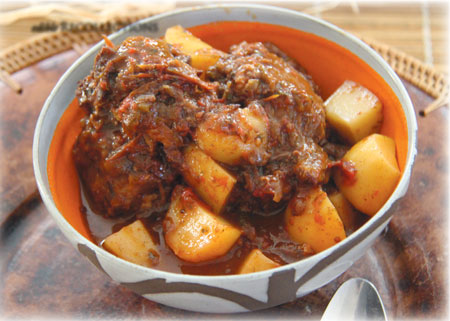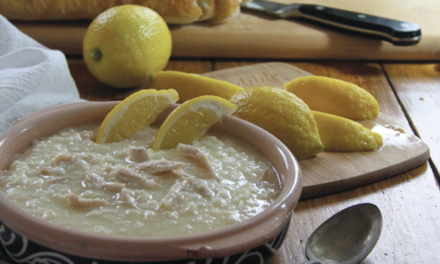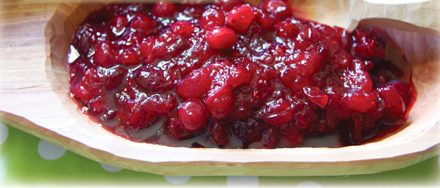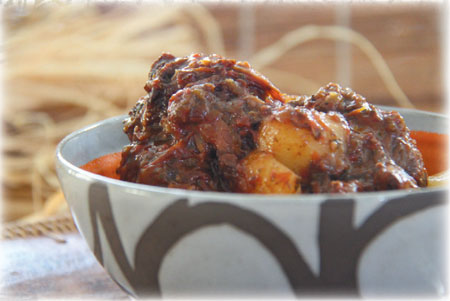
Liz Kinder’s distinctive wax-resist brushwork decoration and bright glazes on a stoneware bowl. Available at Local Pottery, Norwell.
A rich and hearty stew that originates from a South African family’s recipe box.
Ingredients:
- 4 pounds oxtail, crosscut in 1″ to 2″ pieces (local sources listed below)
- 3 onions, peeled and roughly chopped
- 1 teaspoon salt
- pepper
- ¼ cup flour
- 2 tablespoons olive oil
- 16 ounces Worcestershire sauce
- 8 large tomatoes, chopped (or a 28-ounce can)
- 3 tablespoons minced herbs—rosemary, thyme,
- parsley
- ½ teaspoon ground cloves
- 2 cups red wine
- 2 pounds potatoes, peeled and cut into 1” cubes
Instructions:
Toss oxtail chunks in a bowl with salt, pepper, and flour until well coated.
Heat oil in a large frying pan over a medium-high flame. Fry oxtail on all sides, setting pieces aside when nicely browned. Add onions to the pan and cook until tender and golden.
Cover the bottom of a slow cooker or crockpot with a layer of browned oxtail and onions, sprinkle generously with Worcestershire sauce and a splash of wine. Continue layering until all ingredients are in the pot. Add cloves and herbs, then switch on to cook on medium for eight hours. (Alternatively, if you do not have a slow cooker, the entire operation can be carried out in a Dutch oven or other deep pot, baking it in a 225-degree oven.)
At hour four, check on the progress, adjust the seasoning, and add more Worcestershire sauce if necessary.
At hour six, allow the stew to cool. Skim the cooled fat off the top, add potatoes, give it a good stir, adjust the seasoning again, and continue cooking for the remaining two hours.
Serve with rice, crusty bread, and a simple green vegetable.
Read about the family from whom this recipe originates: Read the article here.
by Pamela Denholm who loves boerewors rolls and clam chowder and pap en vleis and apple pie and smoked muscles and butter-dipped lobster and biltong—find her biltong recipe in the eSS&SC Winter 2019 issue—but not steamed clams, those you can keep.
Ask your local farmer listed below about oxtail availability.
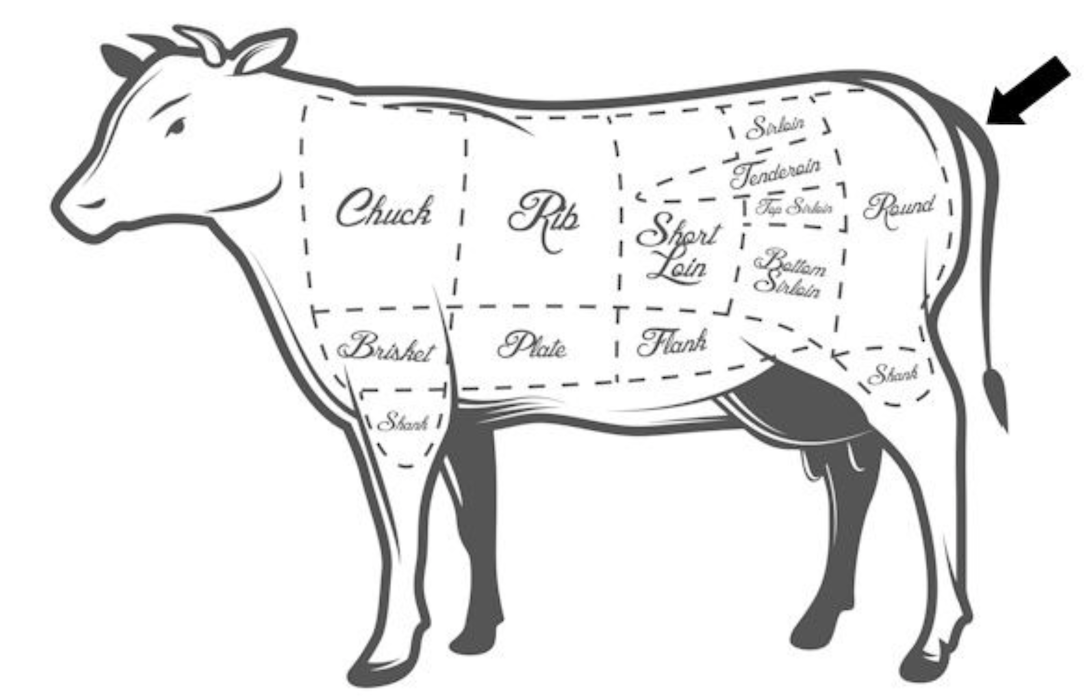
Meat Farmers:
Weatherlow Farms
845 Sodom Road
Westport, MA 02790
www.WeatherlowFarms.com
Dufort
55 Reservoir Avenue
Rehoboth, MA 02769
www.DufortFarms.com
J&L Beaulieu Farm Stand
151 Alden Road
Fairhaven, MA 02719
www.JoeBeaulieuFarm.com
Stonycreek Farm
1210 Wilbur Avenue
Swansea, MA 02777
www.Facebook.com/StonyCreekFarmandGrassFedBeef
WAG the COW!
Why does oxtail make the most luxurious, even voluptuous, broth? Anyone who has ever hand-milked a cow probably gets it. When the back of your head is on the receiving end of a tail-swish and you come close to seeing stars, you deeply appreciate the power locked up in that innocent-looking bovine-appendage. With little apparent effort, your girl lashes her amazingly strong yet supple tail to whisk flies from her flanks—and, if she can, cunningly whaps you upside the head at least once or twice per session.
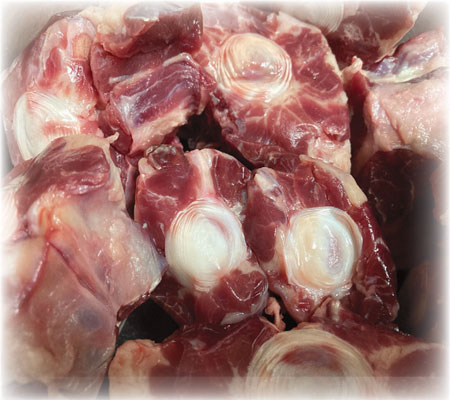
This nicely butchered oxtail was knife-cut, respecting the vertebrae, not band-sawn. Also, inquire at any local grocery store with in-house butchering. Photo: Mike Race
A look at the anatomy of the tail reveals why it is so strong, and at the same time, why it makes such delectable food when cooked low and slow. A narrowing series of 18-20 vertebrae, fitting together like a 3-D puzzle, extends from the cow’s sacrum, strung together with tendons, ligaments and strips of muscle. In life this compact structure is covered in stout cowhide (what else?) and tipped with a fetching tassel of long coarse hair. Upon butchering, the tail is commonly trimmed to leave the two largest vertebrae with the pelvic part of the carcass, and then cut or sawn into sections.
That intricate construction, those materials, provide the best scenario for long slow braising—terrific flavor and structure ready to be unlocked over the period of hours into a supremely gelatinous and savory dish. And what about the name? An ox means a castrated male bovine, formerly very common work animals—therefore common food, too. Because tails always require long cooking, butchers were happy to acknowledge the maturity of the animal when marketing the cut. In fact, given the long and widespread adherence to the “you are what you eat” maxim, the notion of making a comforting, strengthening dish out of a huge animal associated with strength and endurance sells itself. Nowadays, bovine tail is always marketed as oxtail, regardless of the sex or intactness of the animal that sported it in life.
-PM

